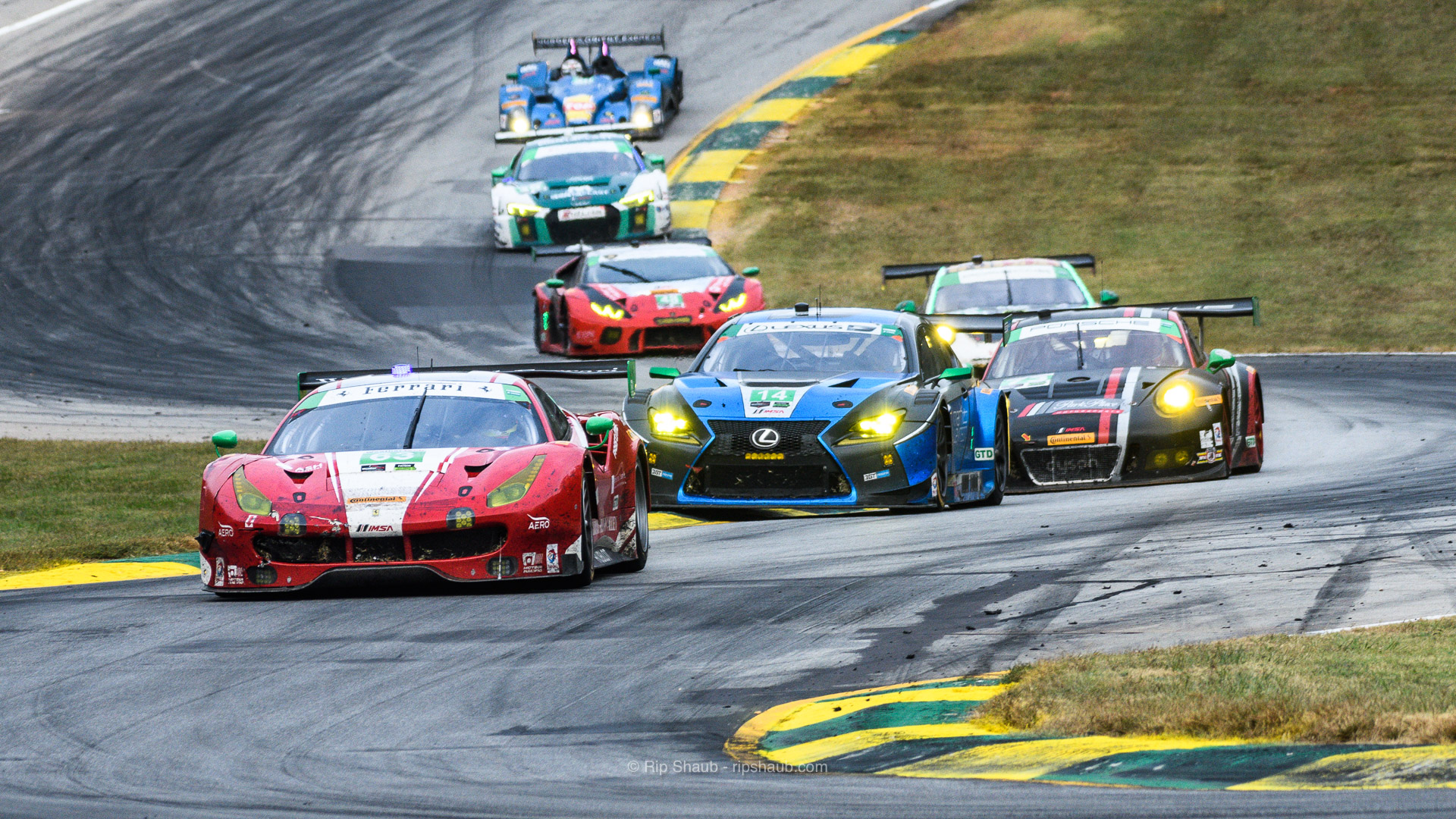

This year’s Petit Le Mans was as you’d expect with 10 hours of racing boiling down to the final 60 minutes. A busy start that set off the 39-car grid was enough to make things interesting from the beginning, and the transition from day to night brought about a shift that would leave some basking in glory while others looked on at what could’ve been. Collisions, hard-fought passes, and close calls made the race’s 20th running as entertaining as you could hope for, and it filled the entire weekend with non-stop action.
Practice on Thursday was all about Team Penske, the IMSA newcomer crew that introduced the big guns of Juan Pablo Montoya, Helio Castroneves, and Simon Pagenaud to the grid. Its entry in the prototype class brought in loads of attention prior to its full-time commitment to next season, and the team bested the rest in FP2. It was enough to set Penske up for an energized qualifying round, which also played into the team’s favor.

Friday evening’s qualifying set the table for Saturday’s highly anticipated event. Penske was able to set pole position in the prototype field while Ferrari swept the GT classes thanks to dominant performances from Scuderia Corsa (GTD) and Risi Competizione (GTLM). Second-place prototype entry, the #2 Tequila Patrón car, wasn’t far off of Penske’s pace, forcing them to stand their ground if they wanted to capture P1. The top qualifying teams in each category were separated by just fractions of a second, foreshadowing the tightly-contested race that we would see come to fruition the next day.

Late morning on Saturday, the track was drenched from an early rain, putting the rest of the day in question for dodgy weather. An initial 11 a.m. wave of the flag saw teams pilot their cars through the wet with grey skies overhead. After just an hour of racing, however, the track began to dry and allowed for faster times and of course, closer battles. The #911 and #912 Porsches paired up and battled for the top in GTLM while the the #29 Audi R8 LMS GT3 hunted down Scuderia Corsa in GTD. Dozens of lead changes throughout the race made it more or less a free-for-all in terms of who would finish first, all up until the 10th hour.

Towards the race’s second half, strategy became more important than ever. There wasn’t a large enough gap between teams to be loose-minded in the pits, and on the track, it was a seesaw in each of the four classes. As night fell and the clock ticked to two hours remaining, it was noticeable that everyone turned a switch from the prior eight hours of racing. A slew of questionable penalties spiced up the final ticks of the clock. Eventually, though, it became a two horse race in every respective category.

GTLM included a heated battle between the #4 Corvette Racing C7.R and #25 RLL BMW M6 GTE while the lower GTD class was close with the Montaplast Audi R8 duking it out against Michael Christensen’s #28 Alegra Motorsports Porsche 911 GT3 R. The top prototypes were close as well with Penske clawing back from an early race class that put the team 10th, eventually making its way back into third.

Finally, the clock zeroed out and left just four teams sitting at P1 in their individual classes. The #2 Tequila Patrón prototype piloted by Brendan Hartley took advantage of two late penalties to claim overall victory and become the race’s top-class winner. The #26 BAR1 Motorsports car finished ahead in the Prototype Challenge field, beating the other two competitors in the category to finish two-three. Bill Auberlen and RLL racing won the GTLM class in the BMW veteran’s 400th start with the brand, gaining his 151st victory in the process. Then, the #29 Montaplast Audi R8 LMS GT car driven by Connor De Phillippi, Sheldon van der Linde and Christopher Mies rounded out the winner’s circle by taking GTD victory, beating the nearest car by 15.518 seconds.